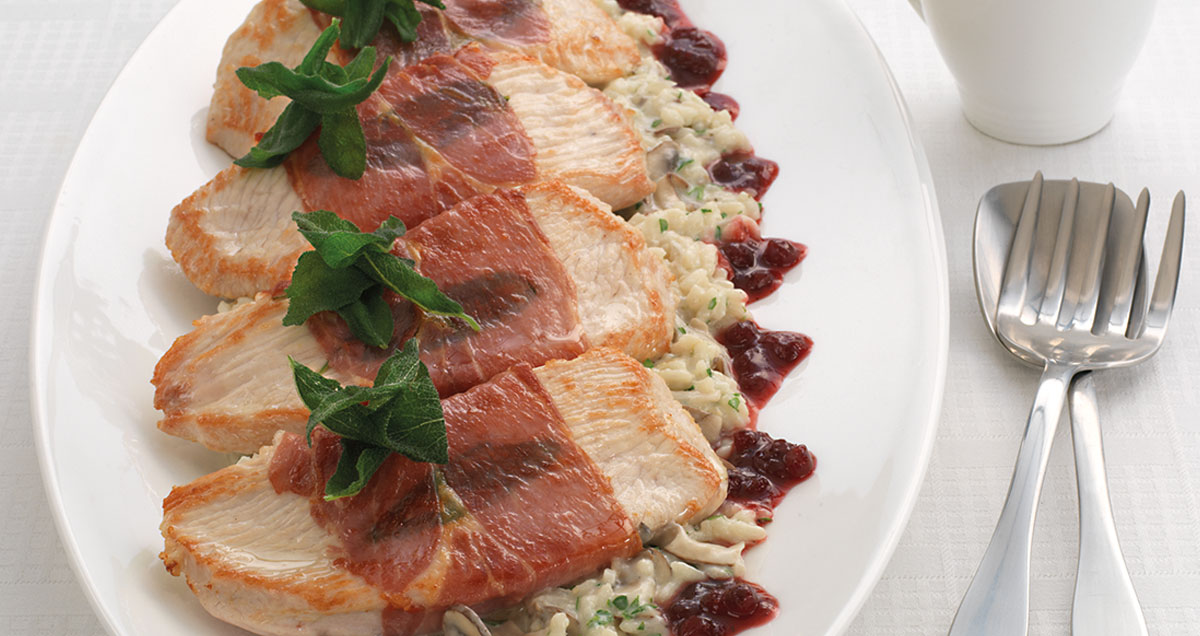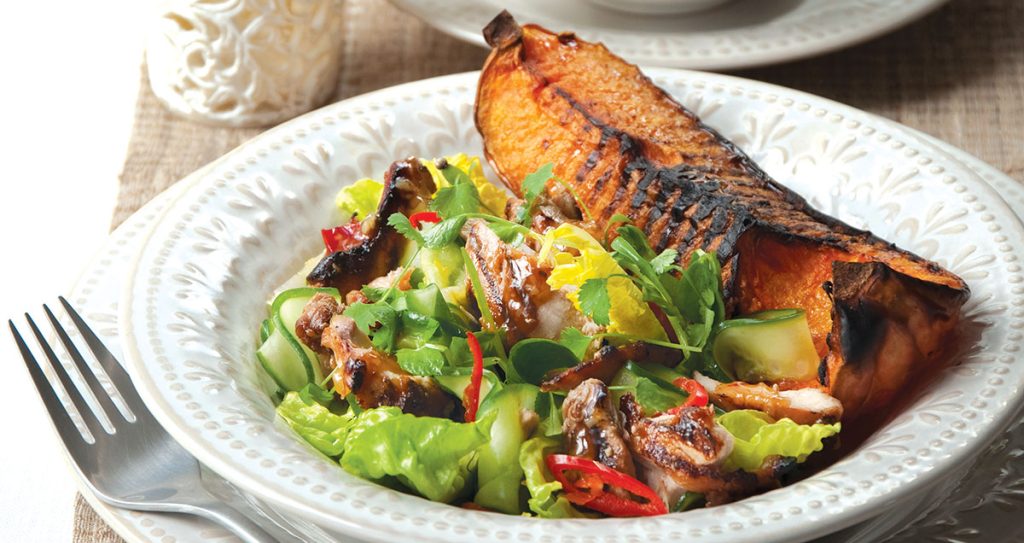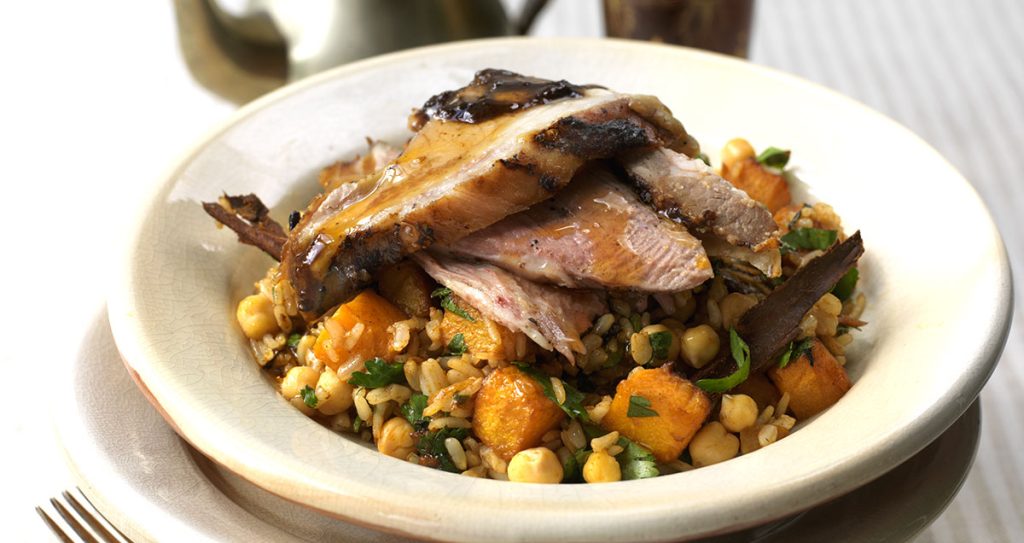, Step by step
Turkey saltimbocca with cranberry compote

The traditional saltimbocca gets an update by using turkey steaks instead of veal.
Method
-
Step 1
Take the turkey steaks from the refrigerator and lay out on your work surface. Place a leaf of sage on each one and season with black pepper. Wrap one parma ham slice around the centre of each one and place back into the refrigerator for later use.
-
Step 2
Put half the olive oil into a saucepan and heat. Add the shallots and cook without browning for 2 minutes. Add the rice and mushrooms and then add the stock a little at a time (as you would if making risotto). When the rice is soft and all the stock has been added and absorbed, add the double cream and parmesan. Season with salt and pepper to taste.
-
Step 3
Take the turkey steaks out of the refrigerator and sauté them in the remaining olive oil until lightly brown and cooked through. Remove from the heat and keep warm.
-
Step 4
Place the risotto in the middle of a long platter and arrange the steaks in a line on top of it.
-
Step 5
Garnish with the cranberry compote and the rest of the sage leaves.
Nutrition
WIld turkeys are native to Mexico and the eastern US. They were first domesticated in Mexico and brought to Europe in the 16th century.
Turkey is a great substitute for red meat and a change from all that chicken.
Weight for weight, turkey breast is actually lower in fat and saturates than chicken breast. The dark meat of turkey is slightly higher in fat, but overall, cooked turkey meat is lower in fat than chicken. Of course, both are much higher in fat if you eat the skin – in fact, consuming the skin more or less doubles the amount of fat in a portion of turkey or chicken.
Turkey breast is also an excellent source of protein and rich in B vitamins and some minerals. It does not contain as much iron as red meat, but it is particularly rich in selenium – a trace element that is important for the immune system and helps to protect our cells from oxidative damage.
DR JULIET GRAY, COMPANY NUTRITIONIST


